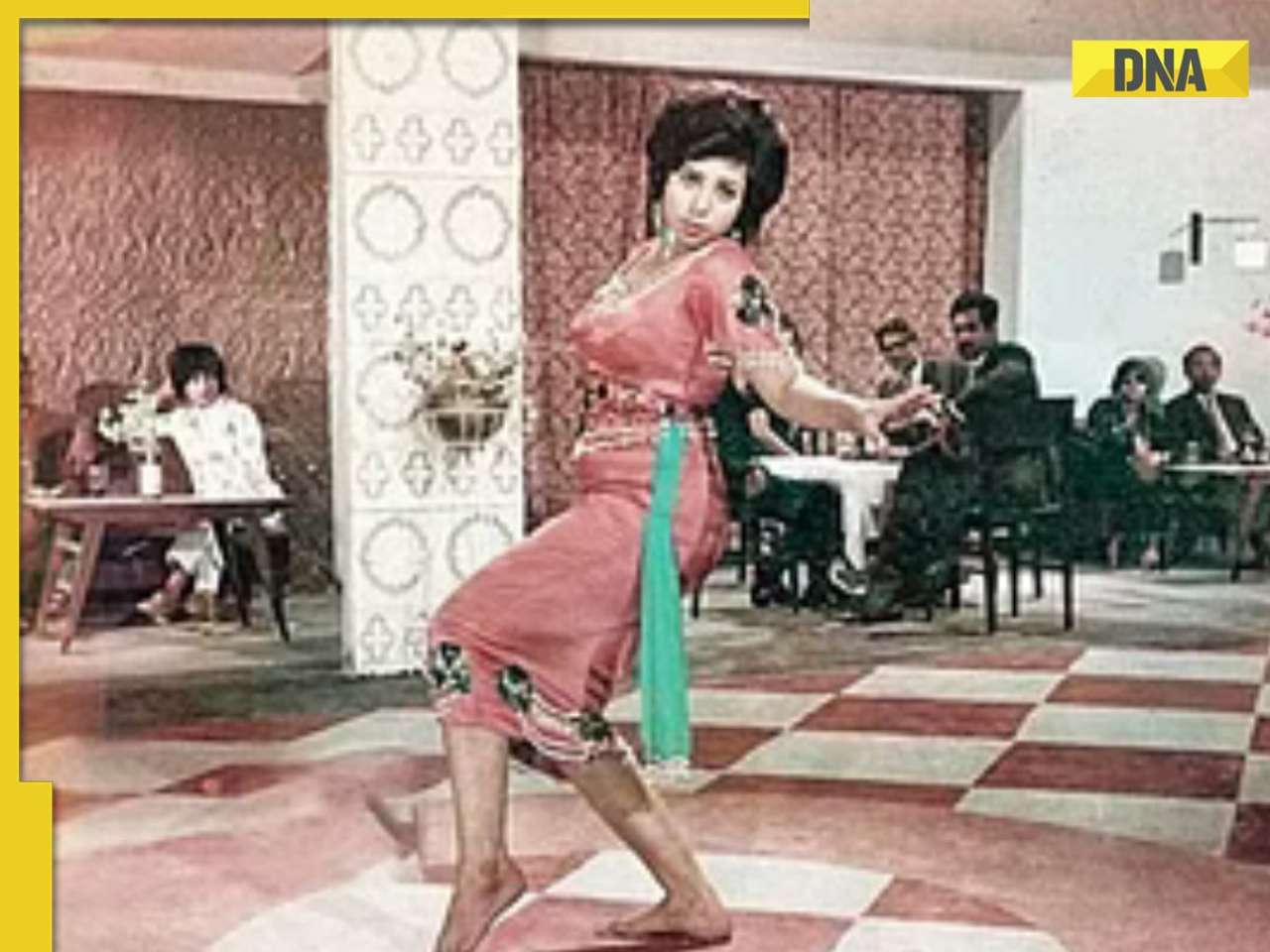Kids TV channels have far from lost their licks. 2005 was a bravura season for this genre, with advertisers across categories advertising on this vernal platform.
MUMBAI: Kids TV channels have far from lost their licks. 2005 was a bravura season for this genre, with advertisers across categories advertising on this vernal platform. A curious entrée, given the absence of most of these advertisers on kids TV from 2000-2004. A recent survey from TAM Media Research records a cavalcade of nearly 40 ‘new’ major product categories ad-libbing on these channels last year, many of them making a maiden entry on this medium.
The these sunrise rollcall of those wooing demographics features just a few of the ‘expected’ kids categories like custard powder, educational institutes or new-age software. Instead, seemingly inexplicable debutants are the norm: toilet cleaner brands, surgical ware, tiles, thermoware, lighting products, antiseptic creams…
What’s feeding this new-found ad voice of kids channels? Is it symptomatic of kids’ pester power increasing in a household? Or is the playpen just more crowded now? Just a few years ago, there was just the solitary Cartoon Network. But by 2005, we had seven kids channels, panning over hip, global brands like Nickelodeon, Toon Disney, Pogo, et al. Moreover, their share of FCT (Free Commercial Time) zoomed from a sniffling 0.7% in 2003 to a stocky 6.4% of the total FCT pie, according to TAM findings.
Commercial time is growing
Click the remote on the only genre where more channels is corresponding with an up-scaling of FCT demand. Says Punitha Arumugam, CEO, Madison Media, “Kids’ channels as a genre is really rocking the charts today.” There’s a substantial growth in ad secondages. Looking to the future, of course there’s a cap on that; there’s that much inventory to sell, she adds. The fine print: It’s not so much about the viewerships of kids’ channels showing meteoric rise - viewership growth is not dramatic - as these channels’ ability to efficiently deliver that niche audience.
Kids gaining muscle just underscores a new emphasis on infotainment, music, second-line mass channels, say some media specialists. There is a healthy demand now for second-line TV channels; they may have lower viewerships, but are cost-effective and low-cost, adds Arumugam. And they step in when the ad inventories on first-line channels go choc-a-block full.
Everyone wants to build brand cachet with the young. Says Nandini Dias, vice-president, Lodestar: Ad revenues on kids channels are definitely growing, as they are for niche channels. Cartoon Network, for example, is showing a clear ability to charge a premium and is among the highest priced channels for niche channels.
Earlier, though, the pester power of kids was the mantra. “Now that doesn’t hold much weight. Kids don’t need to pester any more. Often, parents themselves want to indulge their kids,” adds Dias.
New business pastures
Kids (channels) are growing for a tranche of other reasons. According to Arumugam, over a period of time, kids have become the key ‘influencers’ in categories such as electronics. Not surprisingly, ‘adult’ slots like paints also brush well here, with advertisers like Asian Paints and Nerolac on board.
Wonderland shakes out new business pastures. Dias of Lodestar cites how their client, Goodlass Nerolac, has a tie-up with the Disney channel, which has rolled its characters into the country. So, their stencils can be used in kids rooms. “Most advertisers have realised that if you create a specialised product or usage for kids, it makes sense to be on these channels, and that parents will buy. This is an extension of where their new business will come from,” says Dias.
Again, there are special safer cellphones for school-going kids and this 11-14-year set can be targeted on Nickelodeon, Pogo etc. Even slots like electrical products, fairness products, switches boast of specialised stuff for kids. All this empowers kiddy TV world.
Dual viewership
Then there’s the case of dual viewership. While the child or teen is watching, the adult may also be watching the same programme since there are so many single-TV homes, adds Arumugam.Note, though, that dual viewership is active in Hindi channels, since families across generations watch the same programme together.
In mass channels’ programmes, however, it’s the mother who controls the remote and the child is not the driver. Kiddy channels are switched on by kids and the mother is not actively watching, says Dias.
Point is, even if adult slots advertise on these kids channels, it’s because the target group is not the primary or sole TG. No longer are single demographics targeted by advertisers, but multiple TGs. The challenge is to create advertising tailored for each TG. Communications’ mission would vary according to the TG: either to upgrade the viewer/consumer. Or to educate, to convert or to segregate.
Finally, it’s all about numbers. “For a lot of clients, a TV ad is a TV ad, and they are number driven in terms of TVRs (Television Ratings - it presents the average audience of the TV channel) and the kiddy channel may offer a cost-effective number,” adds Arumugam. At the end of the day, kids channels are obviously all about serious business.
![submenu-img]() Anant Raj Ventures into tier 2 and tier 3 cities, pioneering growth in India’s real estate sector
Anant Raj Ventures into tier 2 and tier 3 cities, pioneering growth in India’s real estate sector![submenu-img]() Sophie Turner reveals she wanted to terminate her first pregnancy with Joe Jonas: 'Didn't know if I wanted...'
Sophie Turner reveals she wanted to terminate her first pregnancy with Joe Jonas: 'Didn't know if I wanted...'![submenu-img]() Meet outsider who was given no money for first film, battled depression, now charges Rs 20 crore per film
Meet outsider who was given no money for first film, battled depression, now charges Rs 20 crore per film![submenu-img]() This is owner of most land in India, owns land in every state, total value is Rs...
This is owner of most land in India, owns land in every state, total value is Rs...![submenu-img]() Meet man who built Rs 39832 crore company after quitting high-paying job, his net worth is..
Meet man who built Rs 39832 crore company after quitting high-paying job, his net worth is..![submenu-img]() Meet woman who first worked at TCS, then left SBI job, cracked UPSC exam with AIR...
Meet woman who first worked at TCS, then left SBI job, cracked UPSC exam with AIR...![submenu-img]() Meet engineer, IIT grad who left lucrative job to crack UPSC in 1st attempt, became IAS, married to an IAS, got AIR...
Meet engineer, IIT grad who left lucrative job to crack UPSC in 1st attempt, became IAS, married to an IAS, got AIR...![submenu-img]() Meet Indian woman who after completing engineering directly got job at Amazon, then Google, Microsoft by using just...
Meet Indian woman who after completing engineering directly got job at Amazon, then Google, Microsoft by using just...![submenu-img]() Meet man who is 47, aspires to crack UPSC, has taken 73 Prelims, 43 Mains, Vikas Divyakirti is his...
Meet man who is 47, aspires to crack UPSC, has taken 73 Prelims, 43 Mains, Vikas Divyakirti is his...![submenu-img]() IIT graduate gets job with Rs 100 crore salary package, fired within a year, he is now working as…
IIT graduate gets job with Rs 100 crore salary package, fired within a year, he is now working as…![submenu-img]() DNA Verified: Is CAA an anti-Muslim law? Centre terms news report as 'misleading'
DNA Verified: Is CAA an anti-Muslim law? Centre terms news report as 'misleading'![submenu-img]() DNA Verified: Lok Sabha Elections 2024 to be held on April 19? Know truth behind viral message
DNA Verified: Lok Sabha Elections 2024 to be held on April 19? Know truth behind viral message![submenu-img]() DNA Verified: Modi govt giving students free laptops under 'One Student One Laptop' scheme? Know truth here
DNA Verified: Modi govt giving students free laptops under 'One Student One Laptop' scheme? Know truth here![submenu-img]() DNA Verified: Shah Rukh Khan denies reports of his role in release of India's naval officers from Qatar
DNA Verified: Shah Rukh Khan denies reports of his role in release of India's naval officers from Qatar![submenu-img]() DNA Verified: Is govt providing Rs 1.6 lakh benefit to girls under PM Ladli Laxmi Yojana? Know truth
DNA Verified: Is govt providing Rs 1.6 lakh benefit to girls under PM Ladli Laxmi Yojana? Know truth![submenu-img]() In pics: Taarak Mehta Ka Ooltah Chashmah actress Deepti Sadhwani dazzles in orange at Cannes debut, sets new record
In pics: Taarak Mehta Ka Ooltah Chashmah actress Deepti Sadhwani dazzles in orange at Cannes debut, sets new record![submenu-img]() Ananya Panday stuns in unseen bikini pictures in first post amid breakup reports, fans call it 'Aditya Roy Kapur's loss'
Ananya Panday stuns in unseen bikini pictures in first post amid breakup reports, fans call it 'Aditya Roy Kapur's loss'![submenu-img]() Remember Harsh Lunia? Just Mohabbat child star, here's how former actor looks now, his wife is Bollywood's popular...
Remember Harsh Lunia? Just Mohabbat child star, here's how former actor looks now, his wife is Bollywood's popular...![submenu-img]() Mother's Day 2024: Bollywood supermoms who balance motherhood, acting, and run multi-crore businesses
Mother's Day 2024: Bollywood supermoms who balance motherhood, acting, and run multi-crore businesses![submenu-img]() Rocky Aur Rani's Golu aka Anjali Anand shocks fans with drastic weight loss without gym, says fitness secret is...
Rocky Aur Rani's Golu aka Anjali Anand shocks fans with drastic weight loss without gym, says fitness secret is...![submenu-img]() Haryana Political Crisis: Will 3 independent MLAs support withdrawal impact the present Nayab Saini led-BJP government?
Haryana Political Crisis: Will 3 independent MLAs support withdrawal impact the present Nayab Saini led-BJP government?![submenu-img]() DNA Explainer: Why Harvey Weinstein's rape conviction was overturned, will beleaguered Hollywood mogul get out of jail?
DNA Explainer: Why Harvey Weinstein's rape conviction was overturned, will beleaguered Hollywood mogul get out of jail?![submenu-img]() What is inheritance tax?
What is inheritance tax?![submenu-img]() DNA Explainer: What is cloud seeding which is blamed for wreaking havoc in Dubai?
DNA Explainer: What is cloud seeding which is blamed for wreaking havoc in Dubai?![submenu-img]() DNA Explainer: What is Israel's Arrow-3 defence system used to intercept Iran's missile attack?
DNA Explainer: What is Israel's Arrow-3 defence system used to intercept Iran's missile attack?![submenu-img]() Sophie Turner reveals she wanted to terminate her first pregnancy with Joe Jonas: 'Didn't know if I wanted...'
Sophie Turner reveals she wanted to terminate her first pregnancy with Joe Jonas: 'Didn't know if I wanted...'![submenu-img]() Meet outsider who was given no money for first film, battled depression, now charges Rs 20 crore per film
Meet outsider who was given no money for first film, battled depression, now charges Rs 20 crore per film![submenu-img]() Meet actress who quit high-paying job for films, director replaced her with star kid, had no money, now lives in...
Meet actress who quit high-paying job for films, director replaced her with star kid, had no money, now lives in...![submenu-img]() This star kid's last 3 films lost Rs 5000000000 at box office, has no solo hit in 5 years, now has lost four films to...
This star kid's last 3 films lost Rs 5000000000 at box office, has no solo hit in 5 years, now has lost four films to...![submenu-img]() Meet actress viral for just walking on screen, belongs to royal family, has no solo hit in 15 years, but still is…
Meet actress viral for just walking on screen, belongs to royal family, has no solo hit in 15 years, but still is…![submenu-img]() This is owner of most land in India, owns land in every state, total value is Rs...
This is owner of most land in India, owns land in every state, total value is Rs...![submenu-img]() Blinkit now gives free dhaniya with veggie orders, thanks to Mumbai mom
Blinkit now gives free dhaniya with veggie orders, thanks to Mumbai mom![submenu-img]() Meet man, an Indian who entered NASA's Hall of Fame by hacking, earlier worked on Apple's...
Meet man, an Indian who entered NASA's Hall of Fame by hacking, earlier worked on Apple's...![submenu-img]() 14 majestic lions cross highway in Gujarat's Amreli, video goes viral
14 majestic lions cross highway in Gujarat's Amreli, video goes viral![submenu-img]() Here's why Isha Ambani was not present during Met Gala 2024 red carpet
Here's why Isha Ambani was not present during Met Gala 2024 red carpet






































)















)
)
)
)
)
)